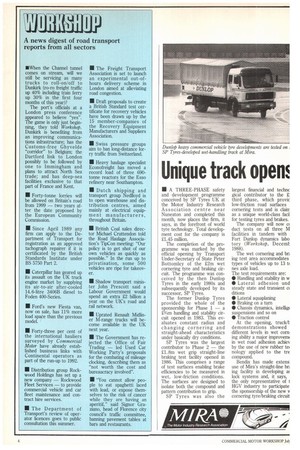Unique track opem
Page 116

If you've noticed an error in this article please click here to report it so we can fix it.
• A THREE-PHASE safety and development programme conceived by SP Tyres UK at the Motor Industry Research Association centre near Nuneaton and completed this month, now places the firm, it says, in the forefront of world tyre technology. Total development cost for the company is 21.45 million.
The completion of the programme was marked by the official opening by Transport Under-Secretary of State Peter Bottomley of the £2m wet cornering tyre and braking circuit. The programme was conceived by the then Dunlop Tyres in the early 1980s and subsequently developed by its successor, SP Tyres.
The former Dunlop Tyres provided the whole of the sponsorship for Phase 1 — a 23/4m handling and stability circuit opened in 1983. This evaluates constant radius and changing cornering and straight-ahead characteristics under basically dry conditions.
SP Tyres was the largest contributor to Phase 2 — the 21.8m wet grip straight-line braking test facility opened in 1986. This comprises a range of test surfaces enabling brake efficiencies to be measured in wet, low-friction conditions. The surfaces are designed to isolate both the compound and pattern contribution to grip.
SP Tyres was also the largest financial and technc gical contributor to the 21 third phase, which provic low-friction road surfaces cornering tests and is claiir as a unique world-class facil for testing tyres and brakes.
The company will now a duct tests on all three M facilities in tandem with Fort Dunlop dynamics labo tory (Workshop, Decemt 1988).
The wet cornering and br: ing test area accommodates types of vehicles up to 13 t( nes axle load.
The test requirements are: • Handling and stability in w • Lateral adhesion und steady state and transient a ditions • Lateral aquaplaning • Braking on a turn • Chassis dynamics, intelliw suspensions and so on • Traction control At the opening, truck/E demonstrations showed different levels in wet corn. ing ability a major improverm in wet road adhesion achier by the use of new rubber te■ nology applied to the tre compound.
Bendix has made extens. use of Mira's straight-line br: ing facility in developing ay lock systems and, it says, the only representative of I HGV industry to participate the sponsorship of the new v cornering tyre/braking circuit




















































































































































